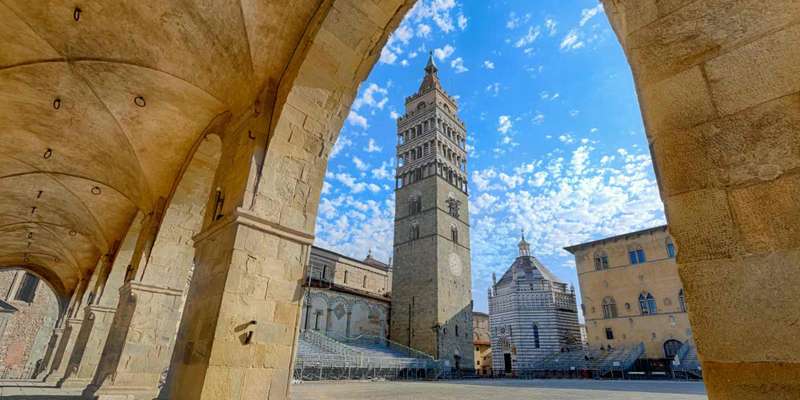- Home
- Useful Tips
- Exploring Pistoia's medieval hospitals
Most travelers to Tuscany rush past Pistoia's extraordinary medieval hospitals, unaware these architectural gems hold centuries of medical history. Over 80% of visitors to the region miss these sites entirely, drawn instead to more famous landmarks. Yet these quietly magnificent buildings offer an intimate glimpse into Renaissance healthcare, with stunning frescoes and surgical artifacts most museums can't match. The challenge lies in accessing their stories – limited signage, irregular hours, and language barriers leave many tourists frustrated. Without local knowledge, you might wander past unmarked doorways concealing 14th-century pharmacies or mistake a former plague ward for just another old building. These oversights matter because Pistoia's hospitals represent a rare continuum of care; the Ospedale del Ceppo has operated continuously since 1277. For history lovers, bypassing these sites means missing the very places where medieval doctors pioneered early public health systems under those iconic terracotta-tiled roofs.


Decoding Pistoia's hospital district – where to start your exploration
Pistoia's medieval medical quarter clusters around Piazza del Duomo, but the most significant buildings lack obvious markers. Begin at the Ospedale del Ceppo, identifiable by Giovanni della Robbia's vibrant ceramic frieze depicting acts of mercy – this 16th-century masterpiece wraps the facade like a storybook. Inside, the former women's ward now houses the Museo dei Ferri Chirurgici, displaying scalpels and birthing tools that trace the evolution from medieval to modern medicine. Locals know to arrive at 10:30 AM when sunlight angles perfectly through the Gothic windows to illuminate the 13th-century well in the central courtyard. A block northeast, the smaller Ospedale di San Jacopo hides its 14th-century apothecary behind an unassuming door near the Romanesque church. These institutions operated as rivals for centuries, resulting in architectural one-upmanship visible in their vaulted ceilings and competing patronage plaques.
Timing secrets for crowd-free access to historic wards
Pistoia's hospital museums follow Italian cultural rhythms, meaning midday closures and unpredictable winter hours. Savvy visitors target Tuesday and Thursday mornings when both major sites open concurrently – rare outside summer months. The Ceppo's surgical museum sees school groups between 11 AM and noon; come before 10:45 AM to have the haunting plaster cast collection to yourself. At San Jacopo, the apothecary's wooden herb drawers reveal their original labels clearest in early light. Locals whisper that Wednesday afternoons, when regional schoolchildren have sports, offer the quietest viewing of the Ceppo's della Robbia ceramics. Should you encounter a locked door, check the tobacco shop across from San Jacopo – the custodian often leaves keys with them when giving impromptu tours. These nuances transform what could be a frustrating treasure hunt into a privileged glimpse of undisturbed history.
Interpreting medieval medical symbols like a historian
The hospitals' architecture speaks a visual language lost to most modern visitors. At Ceppo's entrance, the della Robbia frieze isn't merely decorative – each terracotta panel illustrates one of the seven corporal works of mercy expected of medieval hospitals. Notice the deliberate placement of 'visiting the imprisoned' near the former isolation wards. Inside, ceiling bosses depict zodiac signs corresponding to bloodletting charts; Leo marked optimal days for surgeries. San Jacopo's courtyard well bears carvings of the 'three wise snakes', a medieval symbol of healing borrowed from Asclepius. Even floor patterns hold meaning – the alternating red and white bricks in the Ceppo's loggia represented the mixing of bodily humors. Understanding these details reveals how 14th-century patients 'read' these spaces as we might interpret a hospital's modern accreditation plaques.
Combining hospital visits with Pistoia's living medical traditions
Pistoia's medical heritage extends beyond museum walls into functioning institutions. The Ceppo still operates a first-aid station in its historic complex – peek through arches to see modern ambulances parked beside Renaissance cloisters. For the ultimate continuity experience, visit Farmacia Chiti on Via Cavour, where a 19th-century pharmacy displays ceramic jars from the hospitals' storerooms. Thursday mornings bring a farmers' market to Piazza della Sala, where vendors still sell medicinal herbs once stocked in San Jacopo's apothecary. Time your hospital tour to conclude near lunch; Trattoria dell'Abbondanza serves ribollita in the shadow of the Ceppo, using the same bread-and-vegetable recipe medieval hospitals fed convalescents. This layered approach lets you touch the living thread connecting Pistoia's groundbreaking medieval healthcare to its present-day rhythms.
